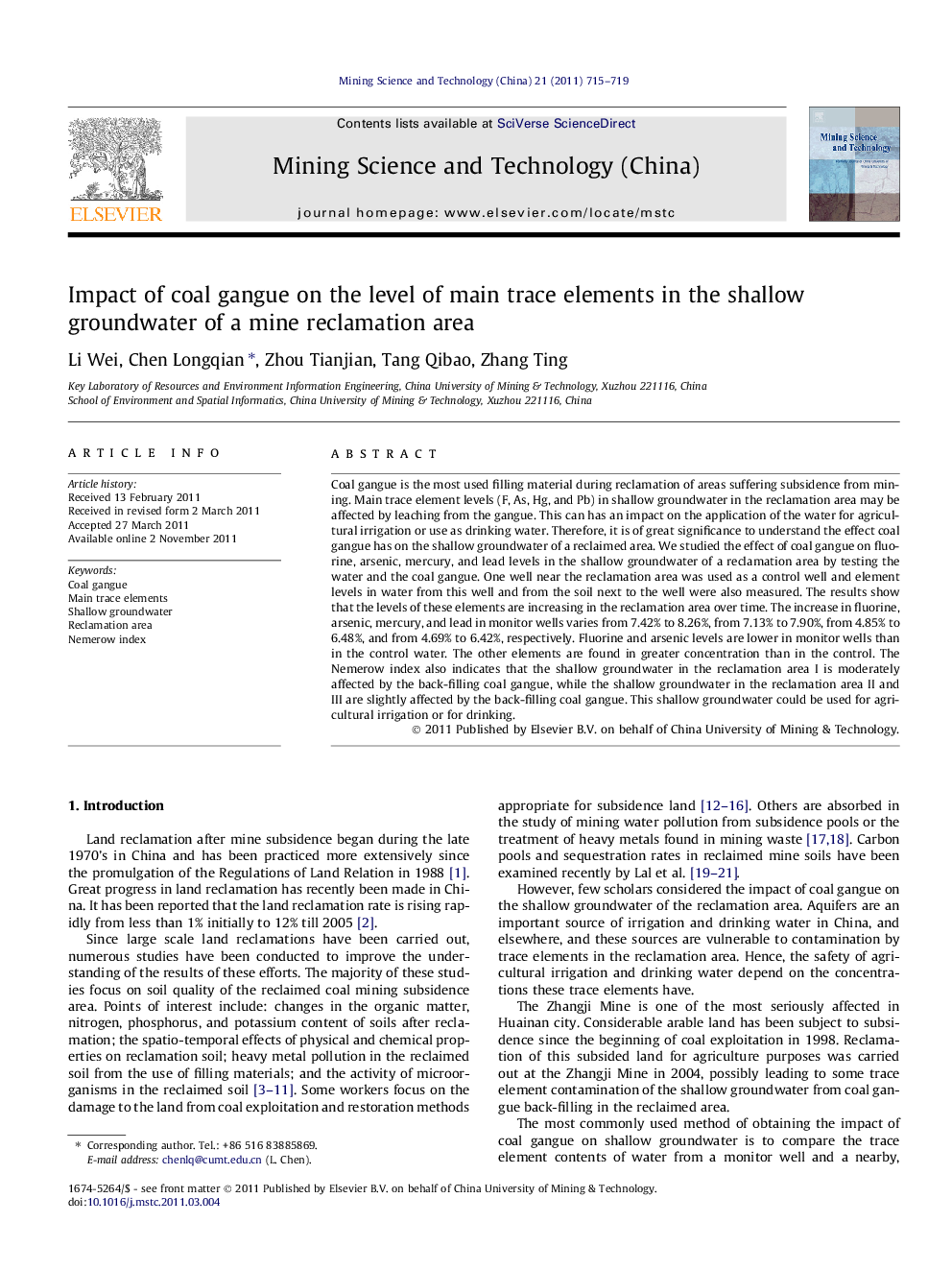| Article ID | Journal | Published Year | Pages | File Type |
|---|---|---|---|---|
| 294519 | Mining Science and Technology (China) | 2011 | 5 Pages |
Coal gangue is the most used filling material during reclamation of areas suffering subsidence from mining. Main trace element levels (F, As, Hg, and Pb) in shallow groundwater in the reclamation area may be affected by leaching from the gangue. This can has an impact on the application of the water for agricultural irrigation or use as drinking water. Therefore, it is of great significance to understand the effect coal gangue has on the shallow groundwater of a reclaimed area. We studied the effect of coal gangue on fluorine, arsenic, mercury, and lead levels in the shallow groundwater of a reclamation area by testing the water and the coal gangue. One well near the reclamation area was used as a control well and element levels in water from this well and from the soil next to the well were also measured. The results show that the levels of these elements are increasing in the reclamation area over time. The increase in fluorine, arsenic, mercury, and lead in monitor wells varies from 7.42% to 8.26%, from 7.13% to 7.90%, from 4.85% to 6.48%, and from 4.69% to 6.42%, respectively. Fluorine and arsenic levels are lower in monitor wells than in the control water. The other elements are found in greater concentration than in the control. The Nemerow index also indicates that the shallow groundwater in the reclamation area I is moderately affected by the back-filling coal gangue, while the shallow groundwater in the reclamation area II and III are slightly affected by the back-filling coal gangue. This shallow groundwater could be used for agricultural irrigation or for drinking.
